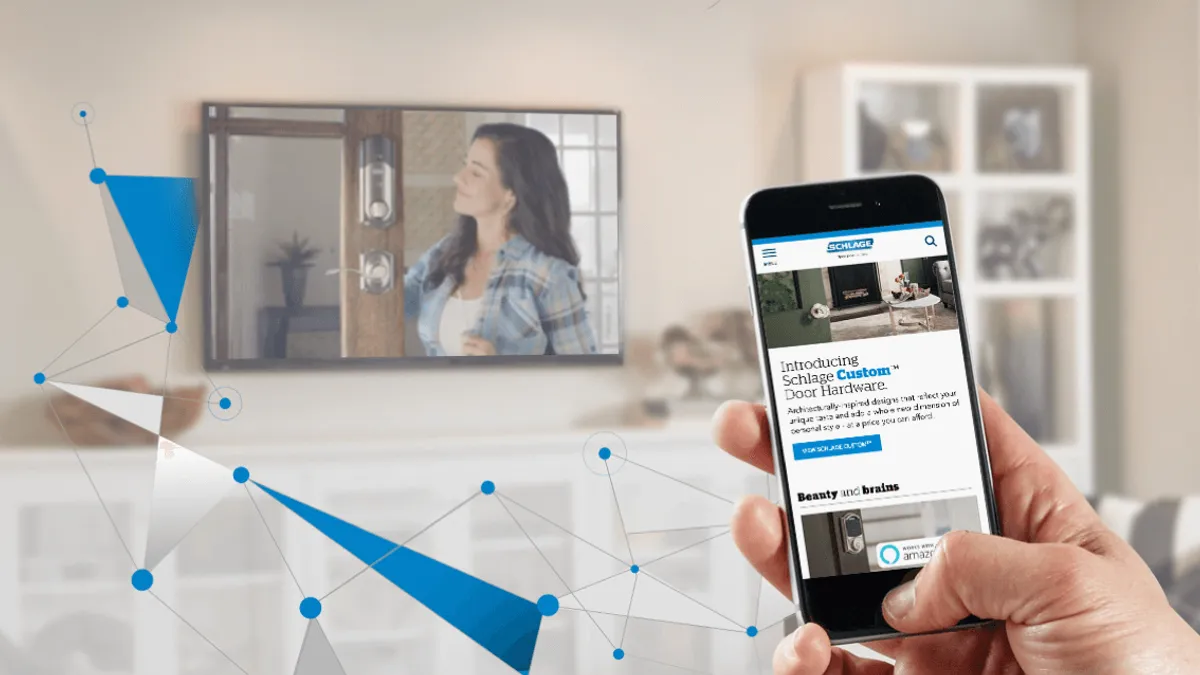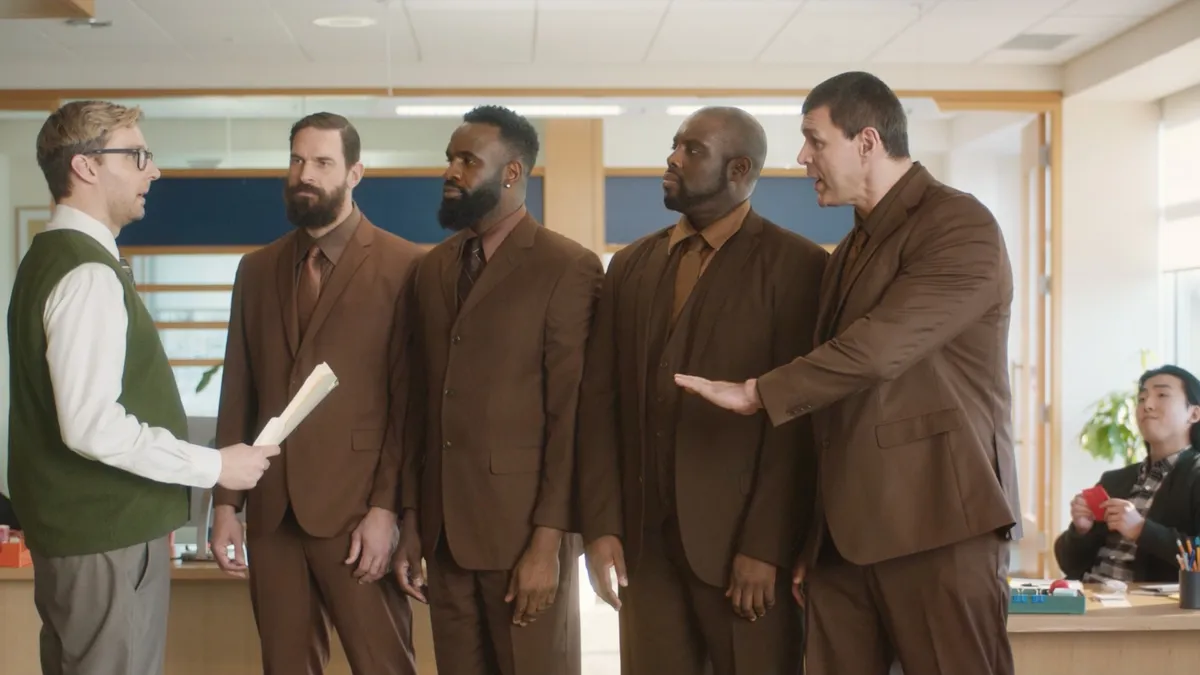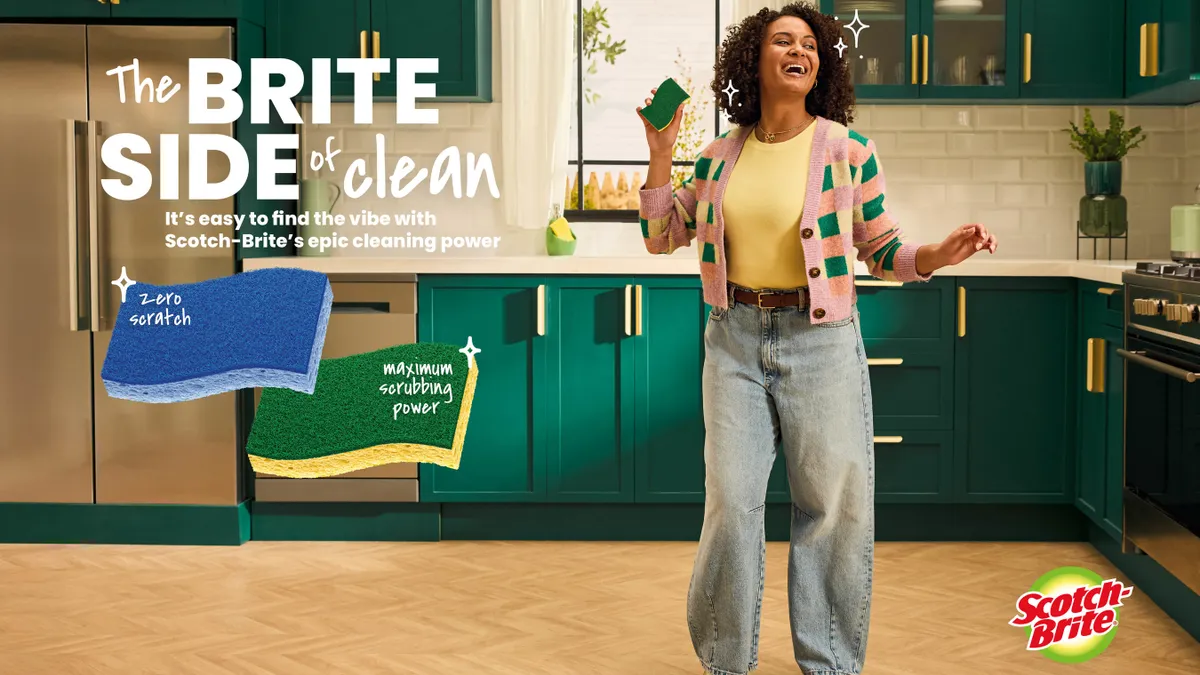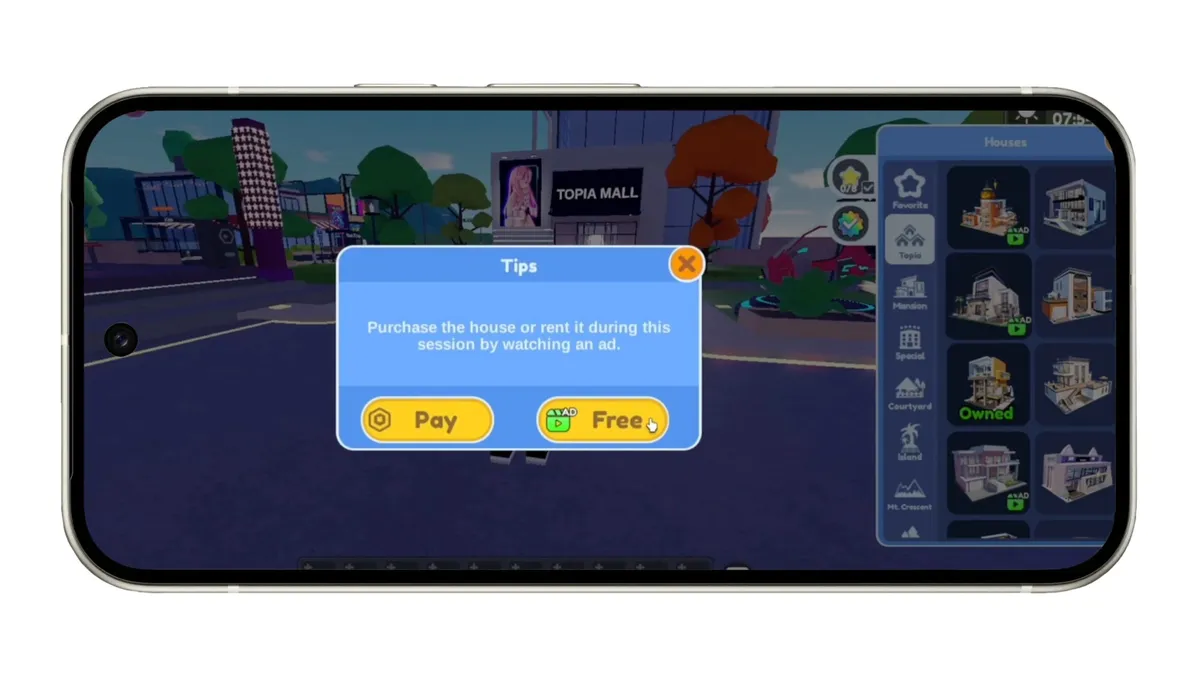When a brand operates in a smaller, niche business like locks and door hardware, ensuring that campaigns reach the right consumers on the right channels is crucial. That's part of the reason why Schlage, working with agency of record (AOR) The Basement and technology partners Centro, Placemedia and Samba TV, made the pivot away from a traditional TV buying strategy toward a data-driven programmatic approach.
The shift, which began in 2016 and has continued to ramp up since then, has shown considerable returns at a time when advanced TV is becoming a hot item in the marketing industry. The brand has leveraged data to expand its slate of networks from one, HGTV, to over 18, including DIY Network, FX and AMC. It's seen a 60% lift in ad efficiency, a sixfold improvement in creative performance and tripled ROI, according to a case study shared with Marketing Dive, along with a 9% lift in retail and 35% lift in e-commerce sales.
"[Schlage] is a well-known brand in an unknown category," Brian Phillips, co-founder and CEO of The Basement, said in a phone interview with Marketing Dive. "We wanted more impressions and to be on-air longer. So the programmatic opportunity became valuable for us, but we also wanted to make those impressions smarter and gain a deeper understanding of the audience."
Building on trust
Advanced TV plans are becoming more common in the marketing industry, especially as viewership of traditional linear TV continues to decline. Factors like audience targeting, cross-screen planning and buying, and addressability are some of the biggest drivers of investment in advanced TV, according to Advertiser Perceptions' 2018 Video Advertising Convergence Report.
"We wanted to have a more surgical, optimizable, data-informed integrated approach, especially to those higher-funnel assets like TV," Jason Owens, the director of consumer marketing at Schlage, told Marketing Dive.
Two in five advertisers now use data to better target their TV ads, Advertiser Perceptions found, but it can often be a rocky transition on the path to a truly blended strategy. Making the process seamless, according to Phillips, requires transparency and closely working with all partners.
"Honestly, it was a lot of trust," Phillips said. "There was a lot of collaboration between us and the brand to come up with this."
The move away from what The Basement calls a "pay and spray" TV strategy grew naturally from the agency's prior duties with Schlage, and also a meeting The Basement and existing partner Centro had with Placemedia and Samba TV at the 2017 Consumer Electronics Show.
"Since we were doing all the digital work and most of our background was in digital, we found an opportunity to combine technologies to integrate a more traditional buy with a digital approach," Phillips said.
Honing an audience
Leveraging digital and data for TV buys has allowed Schlage and its partners not only to grow the number of networks the brand is advertising on, but also glean a better understanding of who its target consumers are. Schlage has historically marketed to a few key segments, according to Owens, including the "invested empty nester" — who is typically aged 50-plus — and the serial DIYer, who is roughly a decade younger.
While those are still important customers, the programmatic approach has provided a more granular view into audience segments, and now covers repair and replace shoppers, connected home enthusiasts and access control people, per Owens.
"We kept our budget the same and were able to accomplish more with programmatic TV versus just a straight linear buy," Owens added. "Demographic and psychographic elements — we were able to articulate and vest some of that."
Sifting through the data
Part of that articulation stems from being able to better tie together different marketing channels, such as by drawing on data from existing e-commerce shoppers.
"We were able to extract an audience based on our converting audience on Schlage.com," Phillips said. "[Placemedia] was able to extract their TV habits and how much time they spend dayparting, what channels and networks they watch — that was our starting point.
"We were monitoring the performance through Samba TV's analytics platform," he added. "We would take that, do an analysis within the team, take that back to the brand and say [...] these are the networks we need to pivot toward and these are the ones we need to pivot away from."
The biggest takeaway from adopting programmatic technology, however, might be the people-led analysis portion, Phillips said. Special events, like closely-watched sports games, can throw off viewership figures and present a skewed picture that demands closer examination a machine won't necessarily pick up on.
"It's great to bring in data, but you can't just blindly follow it," Phillips said.
"We had to look at that as a team and say that's good, that's important, but it could be an outlier," he added. "You have to do analysis on the data, and it's a very human exercise.”
Opening new doors
With a foundation in place, Schlage is planning to only throw more gas on the programmatic TV fire, Owens said. In terms of how that will manifest in its marketing, the brand plans to take the lessons learned from its first go at the strategy and apply them to to a more creative mindset in the months ahead.
"Last year was so much about collecting, understanding and qualifying the data [...] Now, we're in a much better position to take the learnings and apply them creatively," Phillips said.
"One of the things we're looking at this year is how to adapt our creative more to the channel [...] not taking the same asset and running it in other places," he added.























